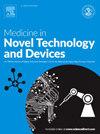生物材料和组织工程策略管理的神经变性:一个关键的观点
Q3 Medicine
引用次数: 0
摘要
尽管神经系统很重要,但它很容易受到中风、严重损伤和神经系统疾病的损害。研究表明,患有神经系统疾病的人更容易死亡。由于现有的药物和治疗方法只能缓解症状,而不能在中枢神经系统(CNS)中产生新的组织再生,因此存在大量未满足的临床需求。尽管基于干细胞的再生治疗有希望,但仍有一些挑战需要克服,包括移植物排斥、费用和伦理问题。这篇综述探讨了当代高分子生物材料治疗神经系统疾病的潜力。它强调了它们在脑组织工程中的应用前景,以实现有效的再生和修复。为了解决目前治疗方法的挑战,神经组织的实施是针对开发复杂的生物材料。体外和体内环境下,人工合成和天然聚合物组成的支架类似于细胞外结构,刺激细胞增殖,提高生物功能。包括由胶原蛋白制成的水凝胶在内的几种材料,具有再生受损神经组织的潜力,可以模拟大脑的周围环境,并绕过传统的药物管理挑战。一种可能用于治疗神经退行性疾病的治疗方法是使用聚合物支架。它们改变脑组织修复和再生的潜力取决于它们与治疗程序的结合。本文章由计算机程序翻译,如有差异,请以英文原文为准。

Biomaterials and tissue engineering strategies for management of neurodegeneration: A critical perspective
Despite its importance, the nervous system is susceptible to impairment from strokes, severe injuries, and neurological disorders. Studies have shown that people with neurological disorders are more likely to suffer death. Substantial unfulfilled clinical demands exist because existing pharmaceutical and therapeutic approaches only alleviate symptoms and do not produce novel tissue regeneration in the central nervous system (CNS). Although there is hope for stem cell-based regeneration treatments, there are challenges to overcome, including graft rejection, expense, and ethical concerns. This review explores the potential of contemporary polymeric biomaterials for the treatment of neurological conditions. It highlights their promising application to brain tissue engineering for efficient rejuvenation and repair. To address the challenge of present therapies, neuronal tissue implementation is targeted at developing sophisticated biomaterials. In-vitro and In-vivo environments, scaffold composed of synthetic and natural polymers resembles the extracellular structure, stimulating cell proliferation and improving biological function. Several materials, including hydrogels that are made of collagen, possess the potential for regenerating damaged nerve tissue, simulating the brain's environs, and circumventing the traditional challenges of administering medications. One therapeutic approach that might be used for the management of neurodegeneration disorder is the use of polymeric scaffolds. Their potential to transform brain tissue repair and regeneration hinges on their incorporation into therapeutic procedures.
求助全文
通过发布文献求助,成功后即可免费获取论文全文。
去求助
来源期刊

Medicine in Novel Technology and Devices
Medicine-Medicine (miscellaneous)
CiteScore
3.00
自引率
0.00%
发文量
74
审稿时长
64 days
 求助内容:
求助内容: 应助结果提醒方式:
应助结果提醒方式:


